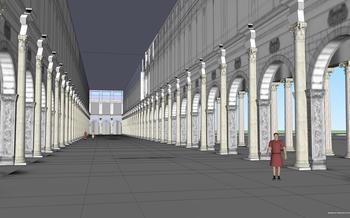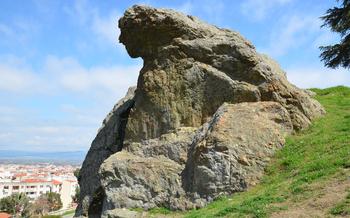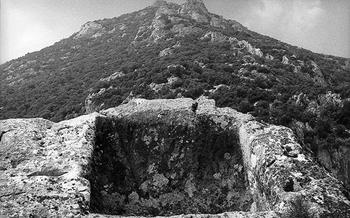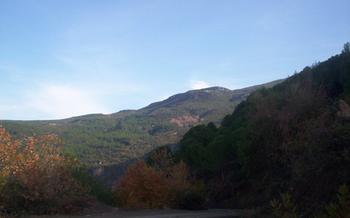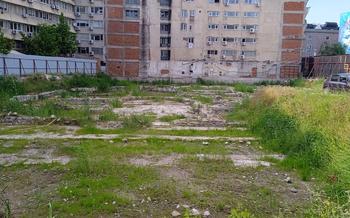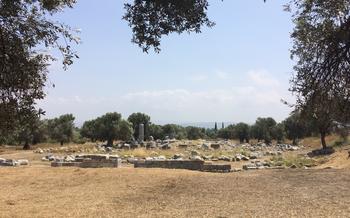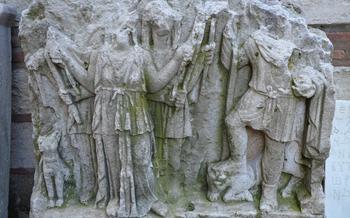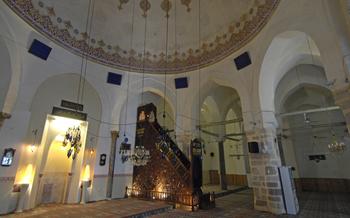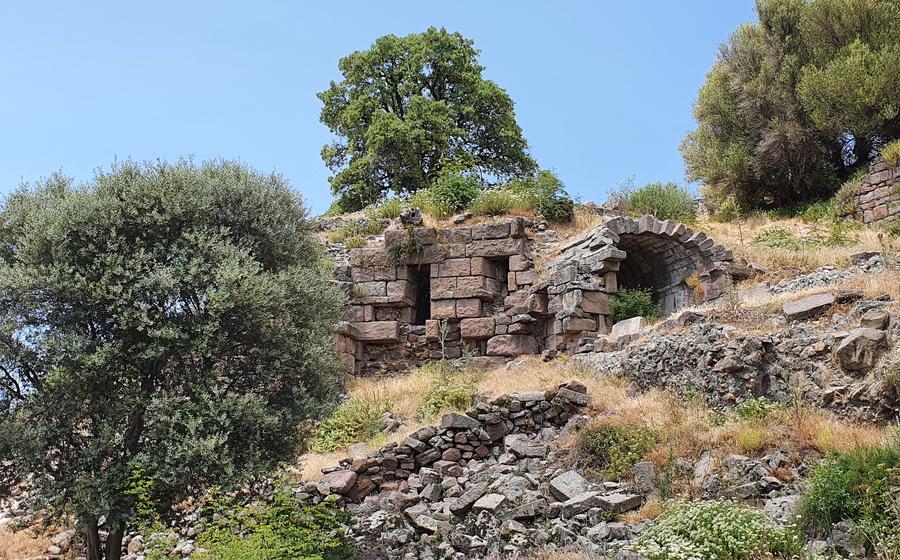
Aigai Ancient City
- Historical Significance:
- Archaeological Discoveries:
- City Walls and Gates
- Temple of Athena
- Agora and Stoa
- Residential Areas: A Glimpse into Daily Life
- Theater
- Necropolis: A Journey into the Afterlife
- Panorama Viewpoint: Capturing the Grandeur of Aigai
- Museum of Manisa
- Local Cuisine
- Festivals and Events
- Transportation and Accessibility
- Accommodation and Dining
- Insider Tip: Unveiling Aigai's Hidden Gem and Capturing the Perfect Moment
Historical Significance:
Aigai, an ancient city in Manisa, Turkey, holds significant historical value as a prominent center in the region. Founded in the 7th century BC by the Lydians, it served as the capital of the Lydia Kingdom, renowned for its wealth and power. Aigai's strategic location along trade routes facilitated its growth and prosperity, establishing it as a major hub for commerce and cultural exchange. The city maintained close relations with neighboring civilizations, including the Greeks, Persians, and Romans, influencing and being influenced by their diverse cultures. However, over time, Aigai's prominence diminished, and it was eventually abandoned, leaving behind a rich legacy of its once-glorious past for future generations to uncover.
Archaeological Discoveries:
Extensive archaeological excavations at Aigai have unearthed a treasure trove of artifacts that provide valuable insights into the city's rich past. Among the most significant discoveries are numerous statues, including a colossal statue of Zeus, which once adorned the Temple of Zeus. These statues offer a glimpse into the artistic prowess and religious beliefs of the Aigaians.
Furthermore, inscriptions found at the site, such as the Aigai Decree, shed light on the city's political and administrative systems. The decree, inscribed on a marble stele, provides detailed information about the city's laws, regulations, and governance.
Excavations have also revealed a wealth of pottery, including both imported and locally produced ceramics. These artifacts provide clues about the city's trade relations and daily life. Ongoing research and discoveries at Aigai continue to contribute to our understanding of this ancient metropolis and its place in the wider history of the region.
City Walls and Gates
Aigai was once encircled by imposing city walls that provided both protection and a sense of grandeur. These walls, constructed using massive stone blocks, stood as a testament to the city's architectural prowess. The walls were reinforced with numerous towers and bastions that served as vantage points for guards to keep watch over the surrounding area.
The city's main entrances were through well-fortified gates, the most notable of which were the North Gate and the South Gate. The North Gate, also known as the Lion Gate, was adorned with impressive lion sculptures that symbolized strength and power. The South Gate, on the other hand, featured intricate carvings and inscriptions that hinted at the city's rich history and cultural heritage.
These gates not only provided access to the city but also served as vital checkpoints for controlling the flow of people and goods. They were strategically positioned to offer a clear line of sight along the main roads leading in and out of Aigai, allowing the city's guards to monitor and regulate movement effectively.
Temple of Athena
Amidst the ruins of Aigai, the Temple of Athena stands as a testament to the city's religious devotion and architectural prowess. Dedicated to the goddess of wisdom and war, the temple was once the spiritual heart of Aigai. Constructed in the 4th century BC using finely cut limestone blocks, the temple's grandeur is evident in its well-preserved façade and intricate details.
The temple's architectural design epitomizes the Classical Greek style, featuring a rectangular plan and a gabled roof supported by rows of graceful Ionic columns. These columns, adorned with delicate fluting and intricate capitals, lend an air of elegance and refinement to the structure. The temple's exterior is further embellished with elaborate friezes depicting scenes from Greek mythology, showcasing the artistic mastery of the city's craftsmen.
Inside the temple, a cella once housed a majestic statue of Athena, the city's patron goddess. Though the statue itself has been lost to time, its pedestal remains, a silent reminder of the deity's presence. The temple's interior was likely adorned with opulent offerings and dedications, reflecting the devotion of Aigai's citizens to their divine protector.
The Temple of Athena played a pivotal role in the religious and civic life of Aigai. It was a place where citizens gathered for religious ceremonies, offered prayers for guidance and protection, and celebrated festivals in honor of the goddess. The temple's imposing presence served as a reminder of the divine forces that watched over the city and its people.
Agora and Stoa
The Agora, the vibrant heart of Aigai, served as the central marketplace and gathering place for the city's inhabitants. This bustling square bustled with activity as merchants displayed their wares, farmers sold their produce, and locals exchanged goods and ideas. The Agora's energy was further amplified by the presence of the Stoa, a covered walkway that lined the square, providing shelter from the sun and rain.
The Stoa was more than just a practical structure; it was a hub of social and economic interactions. Its colonnaded walkways housed shops and workshops, where skilled artisans crafted pottery, jewelry, and textiles. The Stoa also served as a meeting place, where people gathered to discuss politics, philosophy, and the latest news.
Economically, the Agora and Stoa were vital to the city's prosperity. Trade flourished as merchants from across the region came to buy and sell goods. The Agora was a melting pot of cultures, where different languages and customs converged. The vibrant atmosphere of the marketplace reflected the cosmopolitan nature of Aigai, a city that embraced diversity and innovation.
Residential Areas: A Glimpse into Daily Life
Beyond the grand temples and public spaces, Aigai's residential areas offer a glimpse into the daily lives of its inhabitants. Excavations have revealed a network of narrow streets lined with houses of varying sizes and designs, reflecting the city's diverse social structure. The typical Aigai house featured a central courtyard surrounded by rooms, providing privacy and shelter from the elements. These homes were constructed using local materials such as stone, mud-brick, and wood, showcasing the ingenuity and resourcefulness of the city's builders. The layout of the neighborhoods exhibits a well-organized urban plan, with streets intersecting at right angles and public spaces strategically placed to facilitate community interaction. Exploring these residential areas allows visitors to imagine the hustle and bustle of daily life in ancient Aigai, where residents went about their daily routines, engaged in trade, and raised their families within the confines of this ancient metropolis.
Theater
The theater of Aigai, a majestic venue for entertainment and cultural expression, stands as a testament to the city's rich cultural heritage. Constructed with meticulous precision, the theater features a well-preserved seating arrangement that can accommodate a significant audience. The stage, adorned with intricate carvings and sculptures, provides a grand platform for performances that would have captivated the hearts and minds of Aigai's inhabitants.
During its heyday, the theater hosted a variety of performances, including plays, musical concerts, and recitals. The acoustics of the theater are remarkable, ensuring that every word and note resonates throughout the auditorium. The performances held here would have provided a much-needed respite from the daily grind, allowing the citizens of Aigai to immerse themselves in the realm of art and imagination.
The theater's design and architecture reflect the influence of Hellenistic culture, with its emphasis on symmetry and grandeur. The stage is flanked by two imposing columns, which frame the performances and add to the overall visual impact. The seating arrangement is carefully planned, with each row slightly elevated to provide unobstructed views for all spectators.
Attending a performance at the Aigai theater would have been a significant social event for the city's residents. It was a place where they could come together, share experiences, and celebrate their shared cultural heritage. Even today, the theater retains its magic and allure, inviting visitors to step back in time and experience the vibrant cultural life of ancient Aigai.
Necropolis: A Journey into the Afterlife
Beyond the bustling streets of Aigai, a solemn silence prevails in the necropolis, the ancient city of the dead. Located outside the city walls, this sacred ground served as the final resting place for Aigai's inhabitants. As you wander through the necropolis, you'll encounter a diverse array of tombs and burials, each reflecting the beliefs and customs of the city's diverse population.
Simple rock-cut graves lie side by side with elaborate chamber tombs adorned with intricate carvings and inscriptions. These tombs often contained multiple burials, suggesting family plots or communal burial practices. Some tombs feature niches for offerings, where relatives would leave food, drink, and other items to accompany the deceased in the afterlife.
The necropolis also reveals the city's interaction with other cultures. Hellenistic influences are evident in the architectural styles of some tombs, while traditional Anatolian motifs adorn others. This blending of cultural elements speaks to the cosmopolitan nature of Aigai and its role as a crossroads of civilizations.
Exploring the necropolis is a poignant experience that offers a glimpse into the lives and beliefs of Aigai's inhabitants. It's a reminder of the cycle of life and death, and the enduring legacy of the ancient city.
Panorama Viewpoint: Capturing the Grandeur of Aigai
Aigai's panorama viewpoint offers a breathtaking spectacle that transports visitors back in time. Perched atop a hill overlooking the ancient city, this vantage point unveils a mesmerizing vista of the sprawling ruins, the verdant countryside, and the distant mountains. The panorama is a living testament to the grandeur and scale of Aigai, inviting visitors to contemplate the city's rich history and its enduring legacy.
The best time to visit the viewpoint is undoubtedly at sunrise or sunset. As the golden hues of dawn illuminate the landscape, the ruins of Aigai emerge from the shadows, casting long, dramatic silhouettes. Conversely, as the sun dips below the horizon, the sky transforms into a canvas of vibrant colors, painting a breathtaking backdrop for the ancient city.
This panorama viewpoint is not merely a passive observation deck; it is an immersive experience that ignites the imagination and transports visitors to a bygone era. Standing at this vantage point, one can almost hear the echoes of history reverberating through the air, whispering tales of ancient civilizations and forgotten empires. The panorama viewpoint is a must-visit for anyone seeking to capture the essence of Aigai and to appreciate the enduring power of its legacy.
Museum of Manisa
The Museum of Manisa is a treasure trove of artifacts and exhibits that provide a fascinating glimpse into the rich history and culture of Aigai and the surrounding region. Located in the heart of Manisa, the museum houses an impressive collection of sculptures, pottery, inscriptions, and other artifacts that tell the story of the ancient city and its inhabitants.
Among the museum's highlights are a series of well-preserved statues depicting various deities, including Zeus, Athena, and Apollo. These statues offer a glimpse into the religious beliefs and practices of the ancient Aigaian people. The museum also features an extensive collection of pottery, including both utilitarian vessels and finely decorated pieces that showcase the skill and artistry of local craftsmen.
Of particular interest is a collection of inscriptions that shed light on the political, economic, and social life of Aigai. These inscriptions include decrees, laws, and financial records that provide valuable insights into the functioning of the ancient city.
The Museum of Manisa plays a crucial role in preserving and showcasing the cultural heritage of Aigai. Through its collection of artifacts and exhibits, the museum helps to bring the ancient city to life and allows visitors to connect with the past in a meaningful way.
Local Cuisine
Manisa's cuisine is a delightful blend of Turkish and Aegean flavors, reflecting the region's rich cultural heritage. The city is renowned for its Manisa kebabı, a skewered and grilled meat dish that tantalizes the taste buds with its smoky aroma and succulent texture. Another must-try dish is keşkek, a hearty stew made from pounded wheat, meat, and spices, offering a comforting and flavorful experience. For a refreshing finish to your meal, indulge in üzüm hoşafı, a sweet and tangy grape dessert drink that is a local specialty.
Manisa's culinary traditions are deeply rooted in fresh, seasonal ingredients, showcasing the bounty of the region. Local markets are a treasure trove of colorful fruits, vegetables, and herbs, providing a glimpse into the vibrant culinary culture of the city. Whether you savor the delights of traditional Turkish cuisine or explore the unique flavors of Manisa's regional dishes, your taste buds are in for a delightful journey.
Festivals and Events
Manisa comes alive with vibrant festivals and events that celebrate the city's rich culture and heritage. One of the most renowned is the Manisa Mesir Festival, a colorful spectacle that attracts visitors from near and far. Held annually in May, the festival showcases traditional arts, crafts, and local products, filling the streets with music, dance, and merriment. Experience the infectious energy as locals and tourists alike gather to celebrate Manisa's unique identity.
The festival's highlight is the symbolic Mesir Paste, a centuries-old confection believed to possess healing properties. Watch as skilled artisans meticulously prepare this aromatic paste using a blend of 41 different spices and distribute it among the crowd, symbolizing health, prosperity, and unity.
Immerse yourself in the lively processions, where locals donning traditional costumes parade through the streets, accompanied by rhythmic music and vibrant dance performances. Discover the vibrant tapestry of Manisa's culture as you witness traditional art exhibitions, handicrafts demonstrations, and performances of folk music and dance.
The Manisa Mesir Festival is a testament to the city's enduring spirit and a wonderful opportunity to experience the warmth and hospitality of its people. Join the joyous celebrations and create lasting memories as you delve into the heart of Manisa's cultural heritage.
Transportation and Accessibility
Reaching Aigai is a relatively straightforward task. Public transportation options are available, with buses departing regularly from Manisa's main bus station. The journey takes approximately 45 minutes, and tickets can be purchased on-site. For those who prefer the convenience of private transportation, driving is a viable option. The drive from Manisa to Aigai takes about 30 minutes, and there is ample parking space near the ancient city.
Aigai is generally accessible for visitors with disabilities. The site features designated ramps and pathways that allow for easy navigation. However, some areas, such as the upper levels of the theater, may be challenging to access for those with mobility impairments.
The best time to visit Aigai is during the shoulder seasons, spring (April-May) and autumn (September-October), when the weather is pleasant, and the crowds are smaller. During the summer months (June-August), temperatures can soar, making it less comfortable for exploring the ruins. Winter (November-March) can be chilly and rainy, with occasional snowfall, which may affect accessibility to certain areas of the site.
When planning your visit, consider the following tips:
- Arrive early in the morning to avoid the midday heat and crowds, especially during the peak tourist season.
- Wear comfortable shoes, as you will be doing a lot of walking on uneven surfaces.
- Bring water, sunscreen, and a hat to protect yourself from the sun.
- Allow at least half a day to explore the ruins thoroughly.
- If you are interested in learning more about Aigai's history and significance, consider hiring a local guide.
Accommodation and Dining
When seeking accommodation near Aigai, visitors have a range of options to choose from. For budget-minded travelers, guesthouses and hostels offer affordable lodging within walking distance of the ancient city. For a more luxurious experience, several upscale hotels are situated in Manisa, providing amenities such as swimming pools, spas, and panoramic views of the surrounding countryside.
Dining options in the area are plentiful and cater to diverse tastes. Local restaurants serve traditional Turkish dishes, including the renowned Manisa kebabı, a succulent skewer of marinated lamb grilled to perfection. Keşkek, a hearty dish made from wheat, meat, and chickpeas, is another local delicacy worth trying. For a refreshing treat, indulge in üzüm hoşafı, a sweet dessert made from dried grapes simmered in syrup.
Staying in Manisa offers the advantage of a wider selection of hotels and restaurants, as well as easy access to other attractions in the region. However, those seeking a more immersive experience may prefer to stay in nearby towns such as Salihli or Gördes, which offer a more authentic glimpse into Turkish village life.
Insider Tip: Unveiling Aigai's Hidden Gem and Capturing the Perfect Moment
Beyond the well-trodden paths of Aigai, a hidden gem awaits the curious explorer. Nestled amidst the ruins, a secluded spot offers a breathtaking panorama of the ancient city and the surrounding landscape. As the sun dips below the horizon, the sky transforms into a canvas of vibrant hues, casting a golden glow upon the ruins. This magical moment, when time seems to stand still, is best captured in the twilight hours, when the soft light illuminates the intricate details of the ancient structures. For photographers, this hidden viewpoint presents an opportunity to capture Aigai's grandeur and beauty in a unique and unforgettable way. Remember to bring your tripod to steady your camera and capture the perfect shot of this hidden gem.
